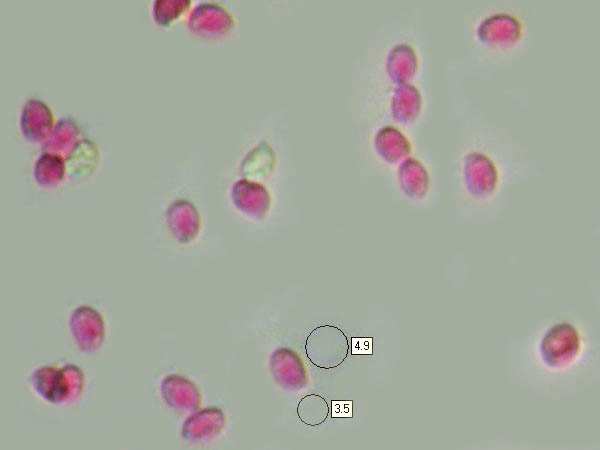Clitocybe phyllophila (Pers.) P. Kumm. - Frosty Funnel
Phylum: Basidiomycota - Class: Agaricomycetes - Order: Agaricales - Family: Tricholomataceae
Distribution - Taxonomic History - Etymology - Identification - Toxicity - Reference Sources
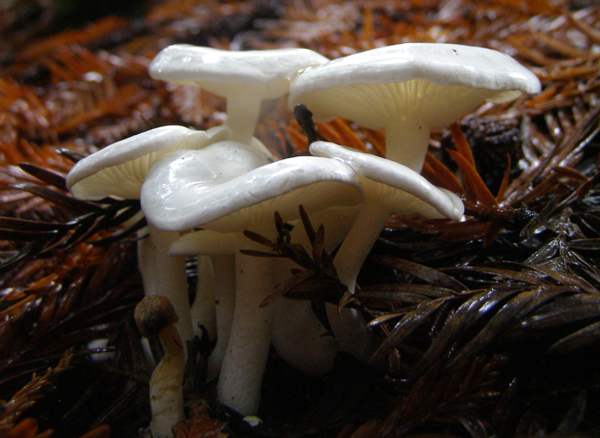
An infrequent find in both coniferous and deciduous broadleaf woodland, these pretty funnels are translucent when viewed from beneath in sunlight. The frosted nature of the cap is best seen on young specimens during dry weather.
This very poisonous funnel contains the toxin muscarine. Great care is essential if gathering any white-gilled mushrooms (for example Calocybe gambosa, St George's Mushroom) that are intended for consumption.
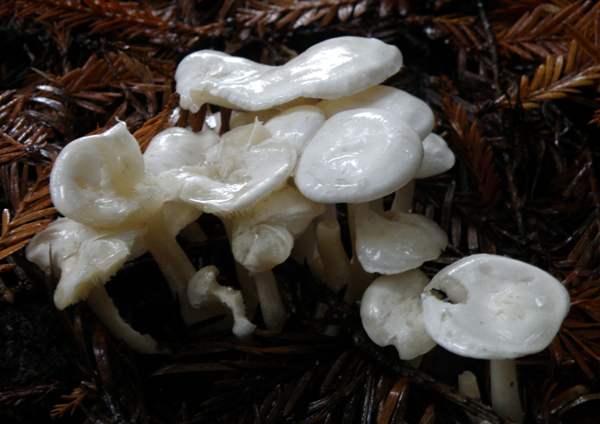
Distribution
Rather uncommon but widespread in all kinds of woodland throughout most of Britain and Ireland (most particularly in the south), these toxic toadstools are found also in many parts of mainland Europe and in North America.
Taxonomic history
This species was described in 1801 by Christiaan Hendrik Persoon, who gave it the binomial scientific name Agaricus phyllophilus. (At that time most gilled fungi were initially placed in a gigantic Agaricus genus, which has since been slimmed down with most of its contents being transferred to other newer genera.)
In 1871 German mycologist Paul Kummer transferred this species to the genus Clitocybe, establishing its currently-accepted scientific name as Clitocybe rivulosa.
Synonyms of Clitocybe phyllophila include Agaricus phyllophilus Pers., Agaricus cerussatus Fr., Agaricus pithyophilus Fr., Clitocybe cerussata (Fr.) P. Kumm., Clitocybe pithyophila (Fr.) Gillet, and Clitocybe cerussata var. pithyophila (Fr.) J. E. Lange.
Etymology
Clitocybe means 'sloping head', while the specific epithet phyllophila comes from Greek and means 'fond of leaves' - a reference to the preferred habitat of this mainly woodland saprobic fungus.
Toxicity
Clitocybe phylophilla is a deadly poisonous and fairly common species that grows in habitats where people expect to find edible mushrooms. That makes it very dangerous indeed. The symptoms of poisoning by this and several similar white-capped Clitocybe species are those associated with muscarine poisoning. Excessive salivation and sweating set in within half an hour of eating these fungi. Depending on the amount consumed, victims may also suffer abdominal pains, sickness and diarrhoea, together with blurred vision and laboured breathing. Deaths of otherwise healthy people from eating these fungi are very rare, but anyone with a weakened heart or with respiratory problems is much more at risk.
Identification guide
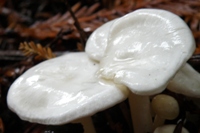 |
Cap4 to 10cm across; convex, flattening with a wavy margin, usually developing a shallow central depression and retaining a small umbo; smooth and silky when dry; white with a fine bloom, developing buff or ochre spots mostly near the centre. |
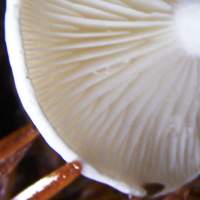 |
GillsDecurrent; crowded; white, turning cream with age. Stem4 to 8cm long and 0.7 to 1.5cm diameter; smooth; white; downy at base; no stem ring.
|
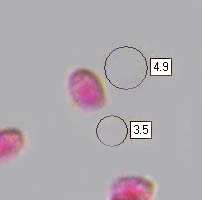 |
SporesEllipsoidal to subglobose, smooth, 4-5 x 3-3.5μm. Spore printPale pinkish ochraceous clay. |
Odour/taste |
Odour sweet; taste not distinctive, but in any case tasting any white-gilled fungi is inadvisable. |
Habitat & Ecological role |
Saprobic, in broadleaf and coniferous woodland and on grassy verges beneath hedgerows. |
Season |
July to early December in Britain and Ireland. |
Similar species |
Calocybe gambosa, St George's Mushroom, has thicker cap flesh and a mealy odour; it occurs in similar habitats but mainly between late April and early July. |
Reference Sources
Fascinated by Fungi, 2nd Edition, Pat O'Reilly 2016, reprinted by Coch-y-bonddu Books in 2022.
British Mycological Society (2010). English Names for Fungi
Funga Nordica, Henning Knudsen and Jan Vesterholt, 2008.
Dictionary of the Fungi; Paul M. Kirk, Paul F. Cannon, David W. Minter and J. A. Stalpers; CABI, 2008
Taxonomic history and synonym information on these pages is drawn from many sources but in particular from the British Mycological Society's GB Checklist of Fungi.
Fascinated by Fungi. Back by popular demand, Pat O'Reilly's best-selling 450-page hardback book is available now. The latest second edition was republished with a sparkling new cover design in September 2022 by Coch-y-Bonddu Books. Full details and copies are available from the publisher's online bookshop...
